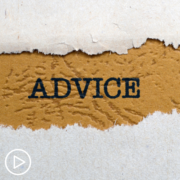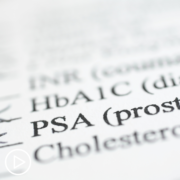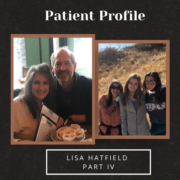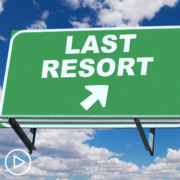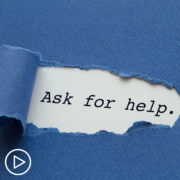Planning for CAR T-Cell Therapy | Advice for Myeloma Patients
Planning for CAR T-Cell Therapy | Advice for Myeloma Patients from Patient Empowerment Network on Vimeo.
How can myeloma patients plan and prepare for CAR T-cell therapy? Myeloma expert and researcher Dr. Beth Faiman shares an overview of eligibility requirements, appointments to coordinate, multidisciplinary team members, and support resources to help in planning.
See More From Thrive CAR T-Cell Therapy
Related Resources:
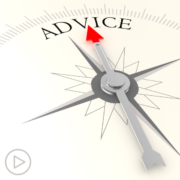
|

|
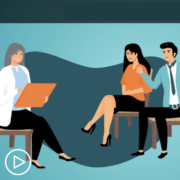
What Do You Need to Know When Considering CAR T-Cell Therapy? |
Transcript:
Katherine Banwell:
Can you give us an overview of the process and timeline for someone choosing CAR T-cell therapy for myeloma treatment?
Dr. Beth Faiman:
Yes. So, CAR T-cell therapy, when we first started discussing this in the mid-2000s, I thought this was science fiction.
Taking somebody’s own cells, engineering them to be fighters against the cancer cells. I thought it was science fiction. But now, we have two FDA-approved therapies for multiple myeloma. It’s Ide-cel, which was approved in 2021 and Cilta-cel, approved in 2022.
Now, the process is lengthy, and I know you’ve covered this before but from my perspective, I think if you want to take something home form this webinar, plan early. So, you need to have three prior lines of therapy as a myeloma patient to qualify for this treatment. But you can start planning for it ahead of time.
So, it’s not available in every center. So, you want to start researching what the closest center would be for you to have this therapy. Many different patient support networks will have these centers on their websites. So anyhow, you find out.
“Okay. I want to learn more about a CAR T-cell therapy.” Then you have to meet with a specialist. So, you get that education, have that referral, and meet with a specialist at a center that does CAR T-cell therapy. And that might be where you got your initial transplant if you’ve then returned to the community. After that, then we find a slot for you when it’s ready. So, there is that process of financial, physical, social things that are checked in the background. You meet with a social worker, nurses, etc.
Once you’ve confirmed that you’re going to go through this process – now, it might be three, six, nine months in the future, if you’re a planner – but if you want to just gain information, it’s that harvesting and storing of the cells. That’s where I try to tell people age is not a number. You can be at any age and you qualify for this therapy. We’ve had people well into their late 70s to early 80s who have gotten these therapies. Long story short, it’s a process.
You get your cells harvested and then while they’re being manufactured into fighters, they take the T cells from your blood through an apheresis machine and freeze them, send them off, make them into fighters, and then reinfuse them in your bloodstream. It’s a long process. It can take anywhere from two to three months from when you decide it’s right for you.
Katherine Banwell:
Well, thank you for explaining that. That’s really important. It puts into perspective. It’s a big undertaking. But also, quite manageable, I think, right, with the right team and support. Who are the members?
Dr. Beth Faiman:
Absolutely. The family members, friends, and, of course – I like to use the words the multidisciplinary team. That’s your physicians, your social workers, nurses, nurse practitioners like me, pharmacists, and then all your other specialists.
So really, mounting that team from diagnosis and throughout your whole journey as a myeloma patient can really enrichen your life and help you thrive in that environment.
Katherine Banwell:
Yeah. It sounds like there’s a lot of support for someone going through this process and that the care partner also plays a critical role on the care team, right?
Dr. Beth Faiman:
Oh, absolutely. So, I am a big advocate for care partner though not everybody has a caregiver. So, it can be a formal caregiver, somebody’s spouse, daughter, son, significant other. Or it can be an informal caregiver. So, I’ve had patients that – because you need to have a care partner to qualify for CAR T-cell therapy, because patients need to be monitored for about 30 days afterwards. So, that might be pulling in friends from your place of worship, people from the community, and then also people from the cancer center.
Some of the larger centers that do the CART-cell therapy have a network setup where you get this list of people that have volunteered to drive you to appointments or maybe arrange for Uber help to drive you back and forth. I am not plugging Uber or Lyft, but a rideshare company.
And so, finding out those resources can help anyone – just about anyone – access these CAR T-cell therapies, because you can have a long-term remission. Think about somebody who’s been through treatment A, B, C, or D and then now, “Gosh, maybe my life is going to be shortened.”
Not necessarily. If this is the right recipe to control their myeloma then they can get 11, 24 months off of everything – just antibiotics – and be monitored. And so, it puts them at a position where if you can get the care partner, get a care team, to support you then you can have access to a potentially life extending with good quality of life therapy.

